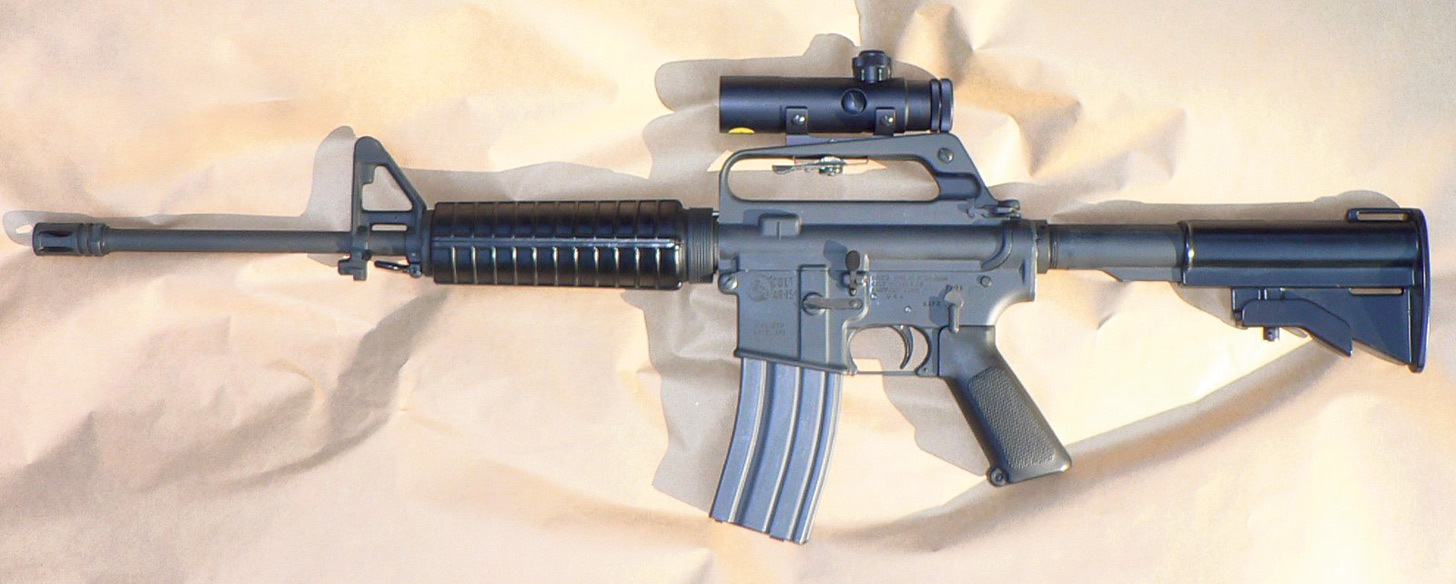In Jordan Klepper’s schtick as a right-wing conspirator on Comedy Central, he reported that in Fire and Fury: Inside the Trump White House, by Michael Wolff, that the president was only semi-literate. Klepper defended Trump by showing us a picture of an 18-wheeler truck and asserting that a semi-truck is still a truck and therefore semi-literate is still literate.This amusing episode stands in stark contrast to events in Parkland, Sandy Hook and Virgina Tech, but it illustrates an important point; semi-automatic is still automatic. The shooter’s job is relatively simple: aim and pull the trigger. Reloading modern weapons however, is extremely complex. Engineering causes the first shot’s recoil—or expanding gasses—to reload each subsequent shot automatically. Reloading comprises the lion’s share of the work for a killing machine.The decision to categorize weapons by the operator’s trigger pull has been lost to the sands of time, but the gun-lobby’s perpetuation of this distinction amounts to pacifying critics by assuring them that fully automatic "machine guns" have been outlawed for civilians since Al Capone.This assertion comes across as if the NRA made some great concession to public safety, but as we saw in Las Vegas, a 3-D printable plastic device is all that’s necessary to make an AR-15 fully automatic. Except for one small internal part, the rifle is an exact replica of the US Army’s M-16, now called the M-4. It has the same muzzle velocity, the same ammunition and the same magazine capacity.The bullet’s less-than-quarter-inch size causes it to tumble in near supersonic flight, producing massive asymmetrical tearing as it bounces around in a human body in fragments, often severing arteries; those victims who are not killed outright by the massive shock of imparted inertia drown in their own blood.For 50 years, the US Army delayed issuing automatic rifles because officers feared troops wasting ammunition. When fired rapidly, rifles cannot be accurately aimed, due to a phenomenon called muzzle rise—the barrel’s tendency to lift away from the target as the result of recoil. The US Army defines weapon fire two ways: direct fire, when you can see a target, and indirect fire when you can’t see a target.The M-16 has a selector lever that allows for continuous fire; when combined with tracer bullets, this allows soldiers to "walk" the rounds into an area as indirect fire. This capability was especially useful in the jungles of Vietnam, where the M-16 was introduced by Robert McNamara.The tragic irony is that the AR-15’s slower fire rate allows better aim than if the bullets were sprayed in the continuous, largely inaccurate fully automatic mode of the M-16.How did we get rapid-fire, military-grade weapons on the streets of America? Well, computers have a part. Before the ’80s, rapid-fire weapons were difficult to manufacture en masse; parts had to be machined to exacting tolerances. PCs were soon linked to lathes and suddenly, machinists could produce 100 times as many parts. Tolerances that no human could achieve meant that designs that were once considered too complex could be pounded out with ease.President Bush signed a bill in 2005 granting the firearm industry complete immunity from malfunctioning guns; to add insult to actual injury, immunity to the people who sold them too. This is the only such immunity ever granted to any industry, ever, effectively eliminating a rising tide of lawsuits.Semi-automatic or "automatic reloading," more accurately, is a primary feature of military weapons, an automated mechanical advantage as distant from revolvers and bolt-action rifles as a jet from a biplane, propelling them to the destructive level of other military weapons like hand grenades, mines and rockets. In the heinous pantheon of methods for the destruction of people, this avenue remains available for domestic profits due to the vehement insistence of a small percentage of the population and the NRA.If sleight-of-hand surrounds the definitions of automatic, the restrictions limiting purchases are verbal judo. Under federal law you can be prevented from buying a gun if you have been convicted of a felony or if you self-report treatment for a mental condition. Sure, they’ll self-report!No mechanism exists to check people’s medical records because there is no law compelling medical establishments to report treatment, and they are loathe to do so because of patient confidentiality. Sure, the federal penalties are stiff for failure of an individual to self report, but since there’s no mechanism to check up on applicants, there is little incentive to tell the truth. No distinction is made between admittance to a state hospital with psychotropic drugs and a visit to the pastor because you have been feeling blue.Now, get this: the federal record of an application or purchase is destroyed in 24 hours; this is why nobody knew the Las Vegas shooter was amassing an arsenal, or if anybody else is now. No record of individual gun purchases or ammunition is kept; in fact, it is illegal to do so.A confluence of increasingly deadly technology, auto-reloading, the militarization of gun owners and a decreasing willingness of legislators to reflect the opinions of the majority of Americans has led to Parkland, Virginia Tech and Sandy Hook. They all have a thread running through them: semi-automatic is still automatic.
Winston Spencer is a graduate of the University of New Mexico and served as a First Lieutenant in the US Army. The opinions expressed here are solely those of the author.





